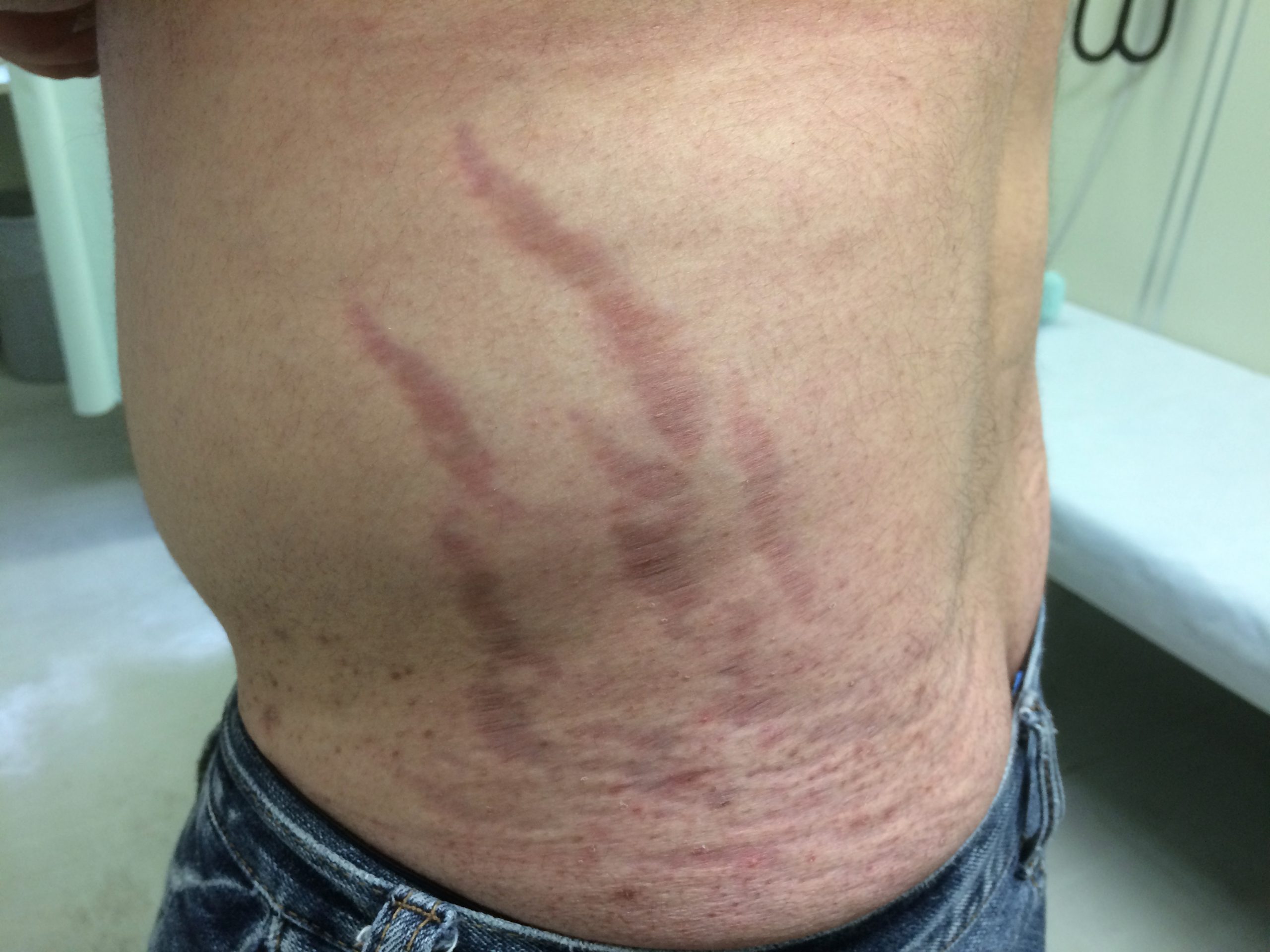Case Presentation: A 29-year-old Japanese man who attended to an orthopedist in an outside hospital with multiple fractures of rib bones and a compression fracture of vertebral bones was referred to our hospital for further investigation for the tentative diagnosis of rheumatoid arthritis worried about increased serum level of matrix metalloproteinase-3. In advance of the referral, the orthopedist made a consultation to hematology, and hematological disorder, including multiple myeloma or metastatic bone disease, were excluded. He complained about the pain on his lower back and thorough history taking revealed that he started to be obese from 2 years ago and to have got multiple fractures. His occupation was construction worker, but any traumatic event was not involved in his history of multiple fractures. On examination of the lower back, the painful site, multiple, wide purplish striae surrounded by acne on his waist, came into sight. Further physical examination revealed hypertension, moon face, buffalo hump, central obesity, and atrophic skin. Thus working diagnosis of Cushing’s syndrome (CS) was made, and we conducted a series of the diagnostic test under hospitalization. ACTH was below a detection limit, but morning and nocturnal cortisol were 20.5 and 22.2 µg/dL, respectively. Dexamethasone did not suppress the secretion of cortisol. Pituitary, thyroid, gonadal, and adrenomedullary system were intact. A contrast-enhanced abdominal CT revealed left adrenal tumor, and 131-Iodocholesterol scintigraphy demonstrated that the tumor is functional, thus the definitive diagnosis of CS by left adrenal mass was made. Eventually, he underwent surgery for resection of the adrenal tumor, and his clinical symptoms were relieved through long-term follow-up.
Discussion: CS is a rare endocrine disorder that can cause multiple morbidities (e.g., fracture, diabetes mellitus, hypertension) through hypersecretion of glucocorticoid, and CS may increase mortality and cost. Thus early diagnosis and treatment are crucial. Pathologic fracture is a common feature of CS, and it may be seen even in young patients like our case, but sometimes the definitive diagnosis of CS with PF can be difficult for non-endocrinologists like our case. In fact, the diagnosis of CS can precede the final diagnosis of CS no more than two years before the first episode of a fracture. The other diagnostic clue is wide and purple striae, which is diagnostic especially when its width was over 1 cm and the clue actually lead us to correct diagnosis.
Conclusions: Diagnostic clues of CS may be easy to find when physicians know the major signs and symptoms, such as pathologic fracture and wide purplish striae. But sometimes those signs are difficult to catch when physicians focus only on their interests. Hospitalists, as a diagnostician, can prevent delayed or missed diagnoses and contribute to the safety of patients and specialist colleagues.

